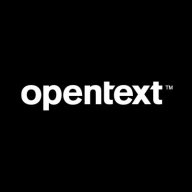

Quip and OpenText Content Management are competing products in the realm of content collaboration and management. Quip has an advantage in pricing and ease of use, while OpenText offers more robust features.
Features: Quip focuses on efficient collaboration tools, real-time document editing, and seamless integration. OpenText Content Management supports comprehensive document processing, workflows, and compliance management for organizations with demanding content needs.
Ease of Deployment and Customer Service: Quip is straightforward to deploy, making it easy for small teams to implement. It provides efficient customer support. OpenText Content Management requires detailed deployment, suitable for large enterprises needing extensive installation and customization; it offers robust customer support but takes longer to set up.
Pricing and ROI: Quip is more affordable, suiting smaller companies with a cost-effective pricing model, ensuring quick ROI. OpenText Content Management involves higher costs but delivers extensive features that yield long-term returns for full-scale content management requirements.
| Product | Market Share (%) |
|---|---|
| OpenText Content Management | 2.0% |
| Quip | 1.2% |
| Other | 96.8% |

| Company Size | Count |
|---|---|
| Small Business | 13 |
| Midsize Enterprise | 4 |
| Large Enterprise | 11 |
OpenText Content Management offers seamless document storage and advanced search features. Ideal for organizations needing integration with SAP and other applications, it enhances workflows while ensuring security and compliance across multiple platforms.
OpenText Content Management stands out with its advanced integration capabilities, allowing seamless connectivity with SAP and other applications. Its enhanced security and permission systems safeguard information, vital for industries like banking, utilities, and oil & gas. Metadata categorization and customizable workflows aid in managing complex document lifecycles. Although improvements in visibility and integration with external tools are needed, the platform provides powerful collaboration tools, enhancing productivity. Users leverage document retention and WebReports features to ensure compliance. Challenges with support, performance during peak times, and architecture complexity are noted. Automation features and analytics require enhancement, alongside more user-friendly SmartUI and record management functionalities.
What key features define OpenText Content Management?OpenText Content Management is widely utilized in sectors such as banking, utilities, and oil & gas. It is implemented to manage software development projects, engineering documents, and workflow automation. Organizations leverage OpenText Extended ECM for document lifecycle management, post-project archiving, and records retention. Integration with platforms like ServiceNow allows efficient handling of document management across global operations, supporting information governance, tax return compilation, and capital projects.
We monitor all Content Collaboration Platforms reviews to prevent fraudulent reviews and keep review quality high. We do not post reviews by company employees or direct competitors. We validate each review for authenticity via cross-reference with LinkedIn, and personal follow-up with the reviewer when necessary.